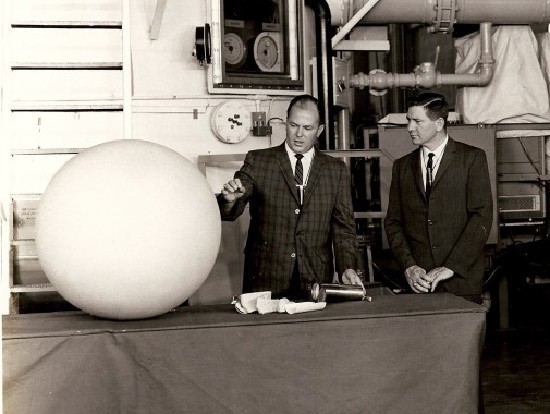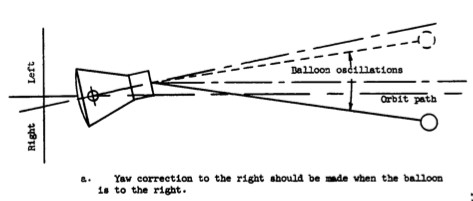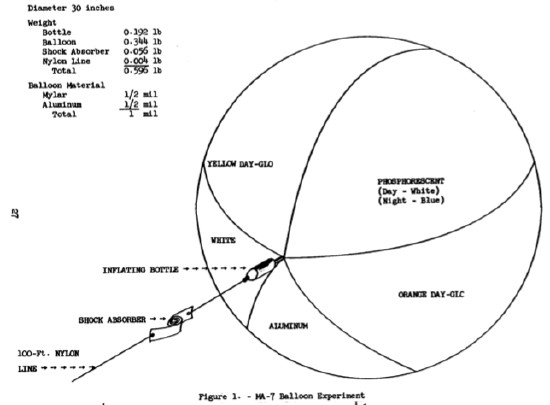
A periodic check on eBay for Project Echo-related material turned up this photo from April 29, 1963: "NASA-MERCURY, HANGAR 5, CCMTA - Left to Right - William Carmines and William Armstrong of NASA describe the balloon experiment for the MA-9 mission."
MA-9 was Mercury-Atlas 9, the last of the first series of manned US space flights. L. Gordon Cooper was the first American to spend more than a day in space. "The balloon experiment" was designed to measure atmospheric drag at various altitudes by inflating a 30-inch balloon behind the orbiter, which would trail at the end of a 100-ft nylon cable. Cooper was also supposed to take photos of the tethered balloon to test visibility in space.

The balloon experiment was a carryover from MA-7, 1962, in which astronaut M. Scott Carpenter became the second American [after John Glenn] to orbit the earth. As the MA-7 flight plan describes it, the balloon experiment was a color test:
Objective: The objective of the visual portion of the experiment is to evaluate the relative merit of various colors for optimum visibility in space at short and long ranges.So, small explosion, burst of mylar confetti, and deployment of beach ball-like balloon on the end of a 100-ft cord. Then photos of the whole thing. Sounds awesome....
The test device consists of a 30-inch diameter balloon constructed of 30 gores of 1/2 mil Mylar - 1/2 mil aluminum foil material. It will be divided into five equal size lunes composed of uncolored aluminum foil, yellow and orange Day-Glo, flat white paint, and phosphorescent paint (figure 1, below).
...
The balloon, [inflating] bottle, and shock absorber will be packaged between two balsa half cylinder shells in a metal cylinder which si three inches in diameter and seven and one-half inches long. It will be mounted in the Mercury spacecraft antenna fairing. [The assembly would be ejected out of a spring-loaded door by the firing of an electric squib.]
...
A small quantity of 0.250-inch diameter Mylar disks will be placed in the folds of the balloon. The Mylar is backed by aluminum foil on one side and is coated with Claray (diffuse-reflecting) compound on the other. These will disperse as the balloon inflates.
Unfortunately, the MA-7 balloon tore on inflation, and only the aluminum and orange Day-Glo lunes were visible. The orange was so much brighter, that the MA-9 balloon, above, was painted entirely in orange. Unfortunately again, the MA-9 balloon failed to deploy at all.
Those balloons would look nicer in color.













